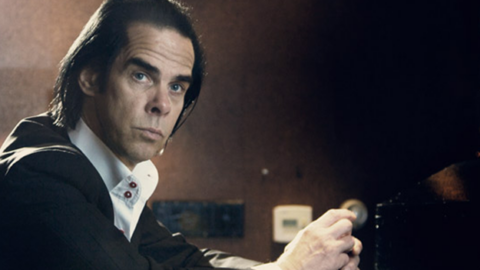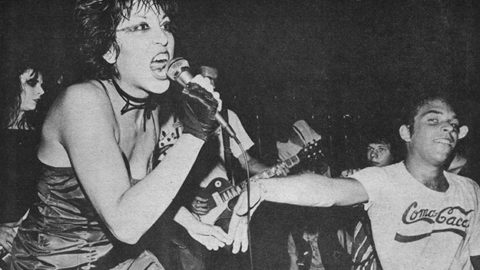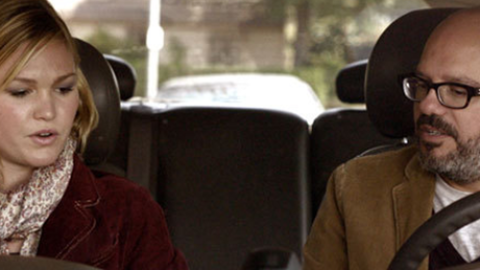Make It Real: Video Revives the Radio Star
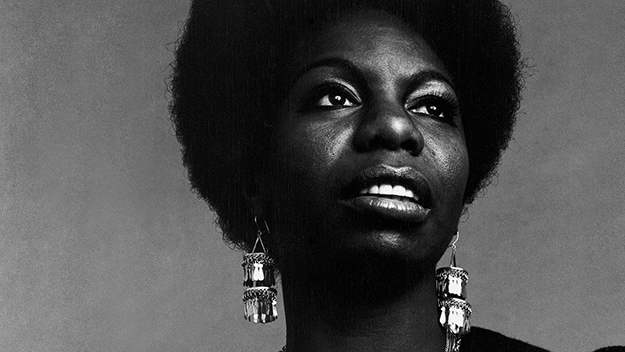
What Happened, Miss Simone?
It’s long past the point of being a trend or fad. Among nonfiction filmmakers, music docs have become as ubiquitous as blue jeans. Now nearly everybody has at least one in rotation.
Things reached a saturation point in 2015. The Sundance Film Festival started the year off with two high-profile submissions, HBO’s Kurt Cobain: Montage of Heck and Netflix’s What Happened, Miss Simone?. In March, SXSW’s “24 Beats Per Second” sidebar introduced over a dozen more, including Mavis!, Jaco, The Damned: Don’t You Wish That We Were Dead, and Theory of Obscurity: a film about The Residents. A few short weeks later, Tribeca debuted As I Am: The Life and Times of DJ AM and Orion: The Man Who Would Be King, and then Cannes raised the curtain on Amy, which is still in theaters and stands as the year’s biggest documentary hit.
In the fall, the Toronto Film Festival dropped Janis: Little Girl Blue, Miss Sharon Jones!, The Music of Strangers: Yo-Yo Ma and the Silk Road Ensemble, The Reflektor Tapes, and Keith Richards: Under the Influence. The Chicago Film Festival chimed in with Syl Johnson: Any Way the Wind Blows. And then DOC NYC threw about a dozen more on the pile, including Blur: New World Towers, Mad Tiger, and the Bruce Springsteen film The Ties That Bind. From rock to classical, rap to country, and from legends to rising stars, one-hit wonders, and cult oddities, suddenly everyone who’s ever played or recorded music has become worthy of a feature-length documentary.
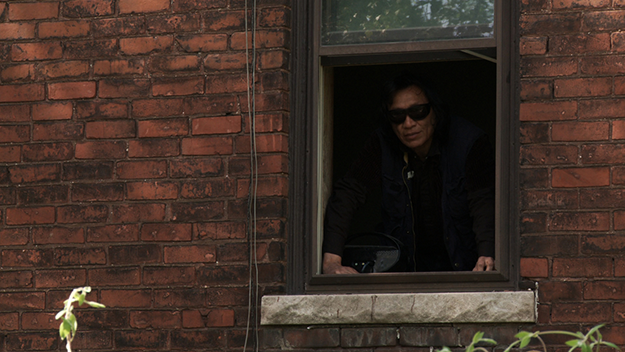
Searching for Sugar Man
While not as crassly opportunistic as mass Hollywood’s formulaic, monkey-see, monkey-do mentality, the nonfiction crowd isn’t immune to riding a wave, certainly not one this strong. Two out of the last three Oscars for Best Documentary went to films about musical acts (Searching for Sugar Man and 20 Feet From Stardom), and four out of the 10 highest-grossing documentaries of all time are centered on musicians—all of them released within the last six years. But whereas copycat narrative films are often greeted with critical eye-rolling (mitigated by frequently vindicating box office), there’s been scant skepticism about, say, the 14th or 15th documentary chronicling what it’s like to tour with the Rolling Stones.
Since very few documentary filmmakers are making bank on documentary films, I don’t begrudge anyone seeking out a potentially lucrative musical subject, especially when the getting has gotten so good. But that doesn’t mean the rest of us are required to conflate industriousness with artistry, or career savvy with innovation. And it certainly doesn’t mean we should stop wondering when the collaboration between filmmaker and subject becomes a strategic partnership, or even a de facto service job. Again, I’m not interested in delegitimizing these films, not when there’s integrity in their creation and they succeed as works of cinema. But surely some skepticism is in order. Surely I can both appreciate the craft at play in Amy and Montage of Heck while also taking note of the fact that both were bankrolled by Universal Music Group, which has a lot to be gained from movies being made of their artists—especially deceased artists whose catalogues could use a little pick-me-up.
“Increasing our presence in film, television and short-form video is critical to our strategy,” Universal Music Group’s CEO Lucian Grainge told Bloomberg News in August, after Amy helped put Winehouse’s Back to Black album back on the Billboard 200. “These projects can open a whole new world of opportunities for our artists, and underscore their massive appeal beyond recorded music. The success of Amy is but one example of this, and there will be many more to come.
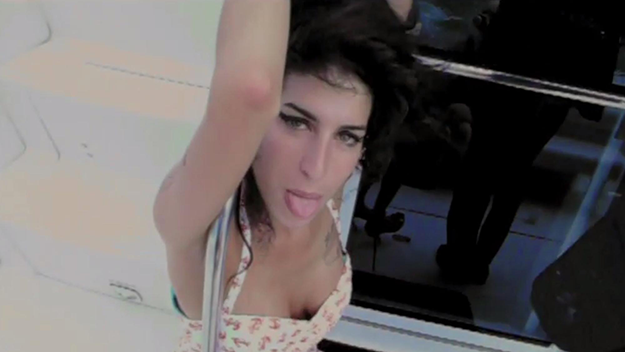
Amy
Indeed, five days after that Bloomberg News story, Warner Music Group Corp announced that it was partnering with Catalyst Global Media on a multi-year, multi-picture agreement to produce films about Warner Music artists. “There is an awful lot of energy and money put into building these brands in the past,” said Charlotte Walls, CEO of Catalyst Global Media. “Film documentaries allow music labels and estates to be rewarded for that investment beyond the artist’s life.”
Vive le cinéma! Vive maximizing on an investment after that investment has committed suicide!
Before I get too high-minded about this, the truth is that I’ve loved some of these films. Made with the full cooperation of and collaboration with Nick Cave, 20,000 Days on Earth (14) is a singular work, refracting one artist’s vision through the equally strong and stubborn vision of the filmmakers. I’m also a sucker for Searching for Sugar Man’s career-reviving storytelling, even as I’m aware of its manipulations, which feel earned rather than imposed. Yet while I enjoyed Amy and Montage of Heck in parts (what the latter makes of Kurt Cobain’s audiotape recollection of his first sexual experience still haunts me nearly a year later), in the end they slid into the familiar groove of the young artist that burns brightly before burning out. Their filmmakers are curious about form, but that formal curiosity feels hitched to another, more tracked ride.
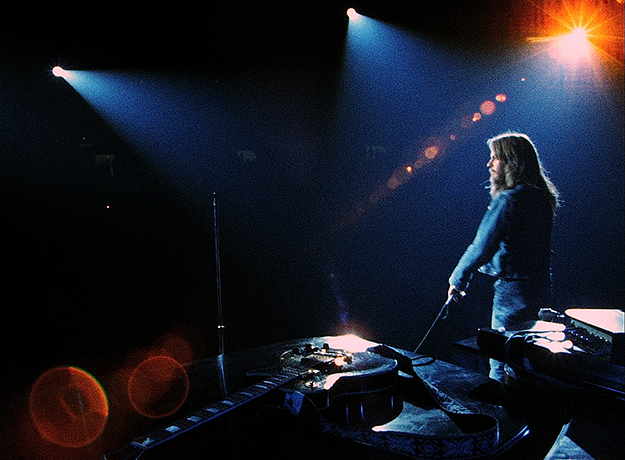
A Poem Is a Naked Person
Now that the music doc is big business, and record companies and artist estates have taken the lead, there’s less chance of the actual films being auteurist expressions, or of one artist interpreting and communing with another. The who’s-zooming-who days of Gimme Shelter and Sympathy For the Devil were over as soon as they began—witness the shelvings of Cocksucker Blues (72) and A Poem Is a Naked Person (74), the latter of which finally made it to theaters in 2015, four decades after Leon Russell decided it was too weird and off brand to earn his approval. Now, more than ever, these are jobs one applies for. Assignments given and taken. Permissions granted. That doesn’t make good art impossible, but it’s also not required. Not with the storylines readymade, with their rising and falling and rising again, their complicated portraits of difficult but brilliant/trailblazing/unsung musicians, and with their once novel formal conceits—largely or entirely archival, no talking heads, staged sequences—beginning to seem rote. What I found exhilarating about 20,000 Days on Earth was how Cave seemed both exalted and manhandled, physically representing his own life and career as well as the ideas being forwarded by the filmmakers. I felt similarly about the ideas-motivated Listen to Me Marlon, which isn’t a music doc but is about an iconic artist, and was made with the participation of the Brando estate. But I feel and fear that these are outliers in a rising tide of adequate movies produced to make good on licensed properties.
Let’s play a game. I’ve arranged the following two alphabetical lists side by side. Once you get past all the fun with punctuation marks (!:?), match these 2014-15 films to their filmmaker.
| Amy Finding Fela! Janis: Little Girl Blue Keith Richards: Under the Influence Kurt Cobain: Montage of Heck Mavis! Miss Sharon Jones! Mr. Dynamite: The Rise of James Brown Sinatra: All or Nothing At All The Music of Strangers: Yo-Yo Ma [etc.] What Happened, Miss Simone? |
Alex Gibney Alex Gibney Alex Gibney Amy Berg Asif Kapadia Barbara Kopple Brett Morgen Jessica Edwards Liz Garbus Morgan Neville Morgan Neville |
If you answered all of these correctly, there’s a good chance you’re a programmer, a critic, Alex Gibney or Morgan Neville. (In the mathematically unlikely event that either man didn’t direct or produce one of these films, I’d wager they were approached as somebody’s first choice to do so.) No one’s aiming for interchangeability, but none of these titles are risking being overlooked by algorithms or search engines. But why should they? These films were made to be seen, heard, and felt. Let the market support as many as it can, and let filmmakers get paid well to make them.
But please let’s not assume, pace poptimistic popularity, that this is the pinnacle of the art. And please let’s not crowd film festivals with Netflix and HBO-ready properties that resemble last year’s Netflix and HBO-ready properties. There’s limited oxygen for nonfiction films, and festivals furnish invaluable pockets of air. In packing the house on opening and closing night with these films and their Instagram-ready, not-quite-impromptu after-screening performances, you’re neglecting films that could better benefit from that platform, and the press coverage that comes with it. (Yes, I realize such placement is often also about pleasing festival donors, but there’s more than one way to do that.) Even in the supposedly specialized market of documentary filmmaking, the rich are often granted the best opportunities for getting richer, while the scrappy films are left to fight over the scraps of a Sunday morning or Tuesday afternoon. Trickle-down economics doesn’t work in film festivals any better than it does at large. What’s good for Simone or Jones or Janis likely won’t be any good for (T)error.
Music docs are hot right now. Good—get that gig, earn that money. In the process, make (and program and distribute) a great movie if you can, if you’re allowed. I’ll try to watch it if I can, and at the very least I’ll put it in my queue with the other exclamatory and interrogative and colon-centric titles. But then, when your debts are paid, please go and make (and program and distribute) something that’s unlike anything else, something that’s unlike anything I already know I want, something that’s celebrity-interviewee-who’s-the-world’s-biggest-fan-free. At least until that Catalyst/Warner Music Group Corp money starts really kicking in. Looking forward to that Enuff Z’Nuff archival epic when it does.



